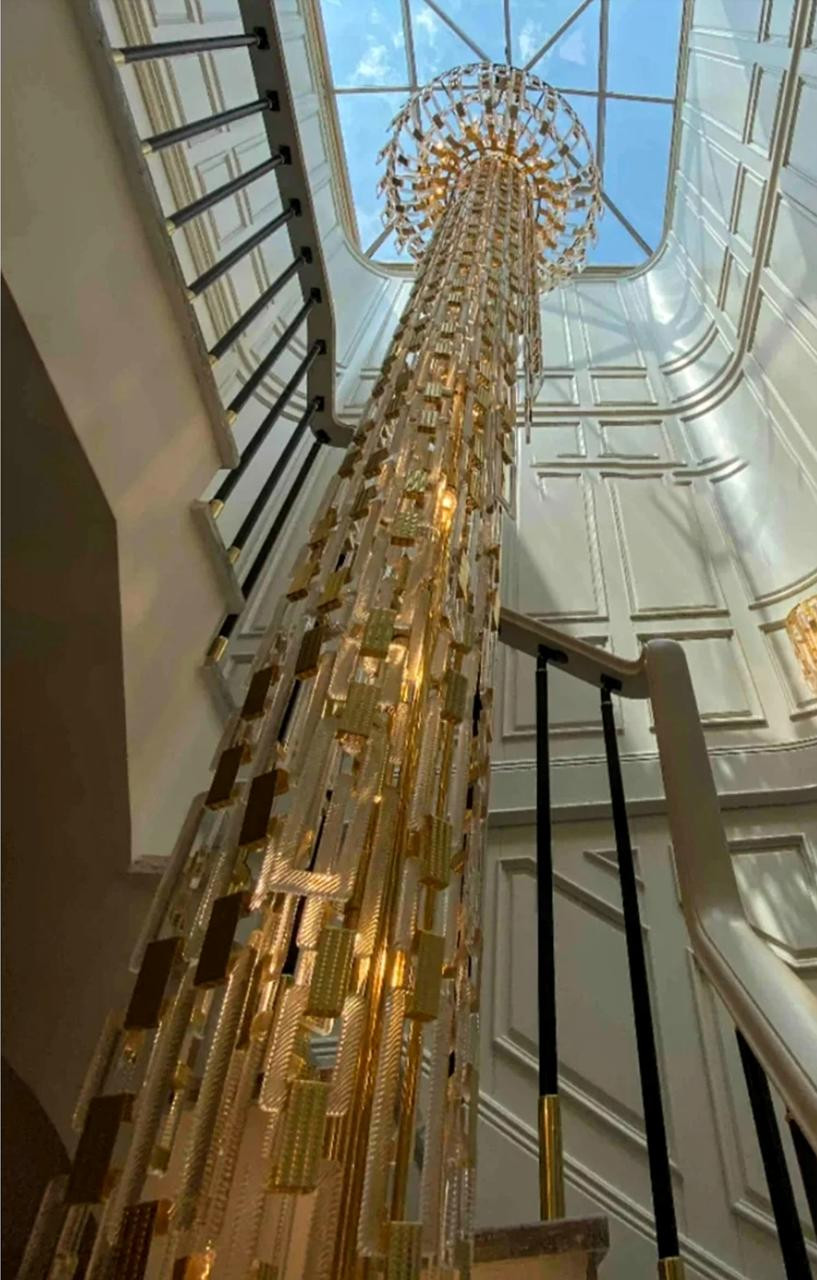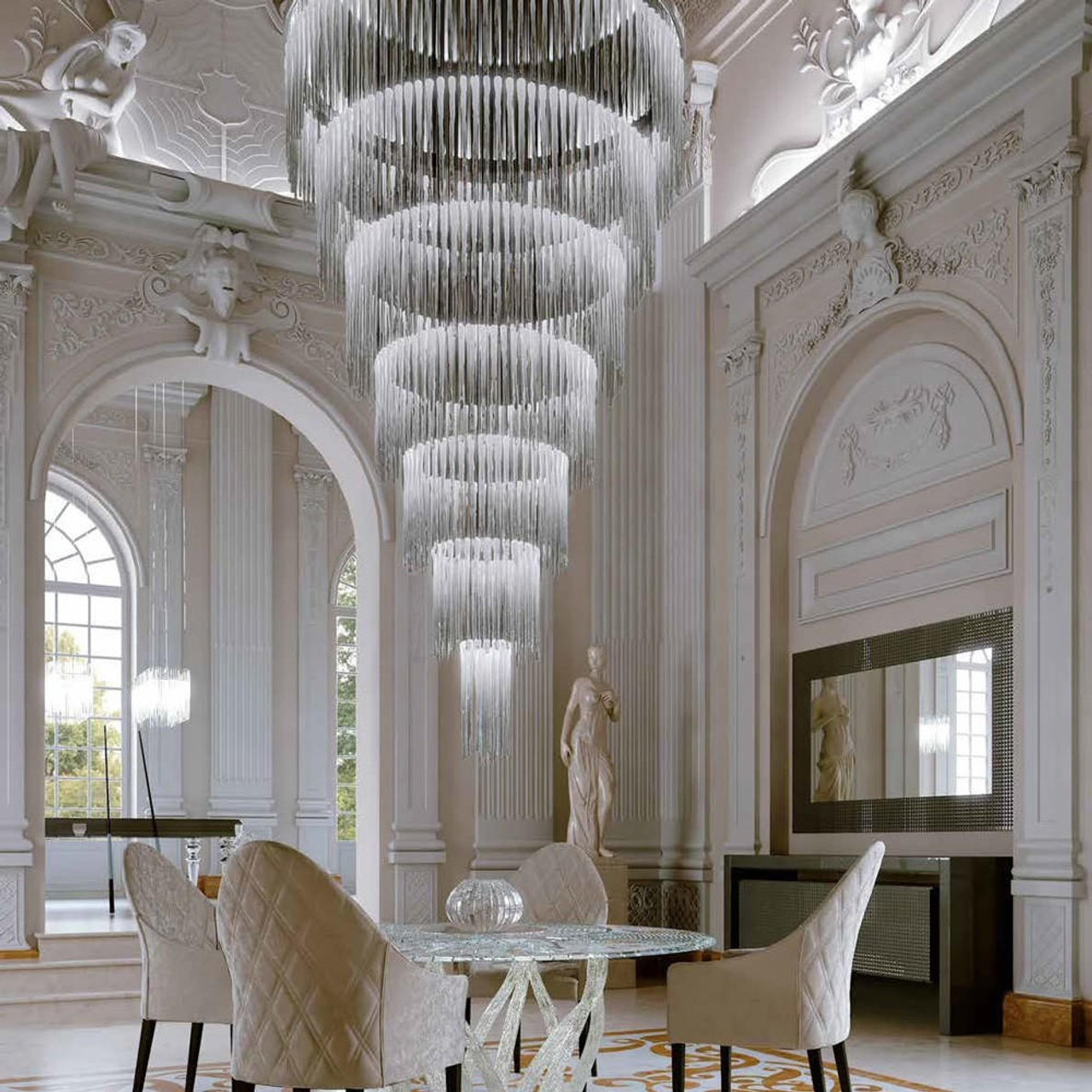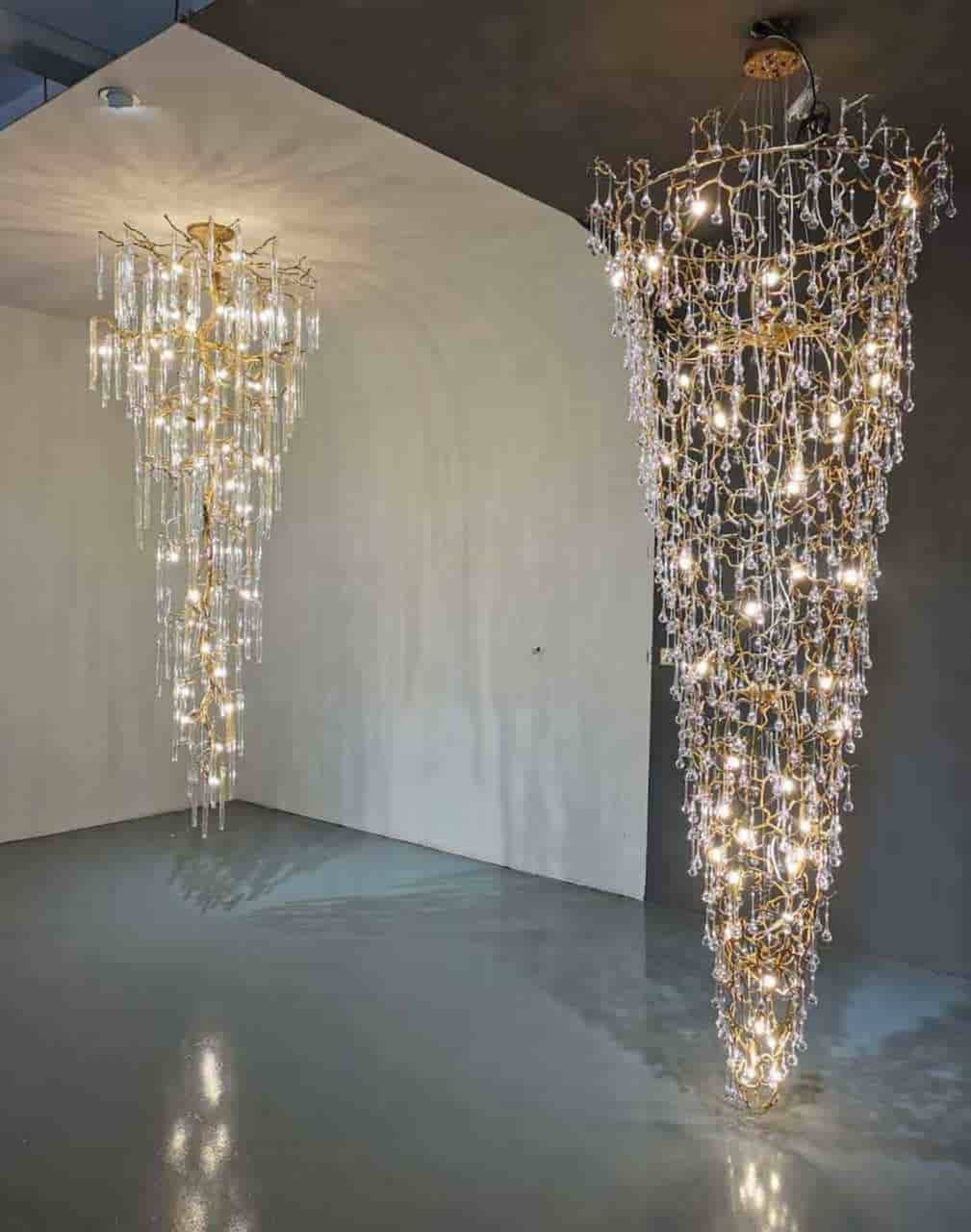The Impact of Architecture on Mental Health: Designing Spaces for Well-Being
26th Aug 2024
Introduction
The spaces we inhabit have a profound impact on our mental health and well-being. From the rooms where we live and work to the public spaces we navigate daily, architecture shapes our experiences, influencing our emotions, thoughts, and behaviors. As the understanding of mental health has evolved, so too has the recognition of the role that architecture plays in supporting—or detracting from—our psychological well-being. This blog explores the intricate relationship between architecture and mental health, examining how thoughtful design can enhance well-being, reduce stress, and contribute to a healthier, happier life.
Understanding the Connection Between Architecture and Mental Health
The Psychology of Space
Architecture is more than just the physical structures we inhabit; it is a reflection of our psychological needs and desires. The spaces we occupy can profoundly affect our mood, stress levels, and overall mental health. For instance, environments that are cluttered, dark, or cramped can induce feelings of anxiety and stress, while spaces that are open, well-lit, and orderly can promote relaxation and mental clarity.
Psychologists have long studied the effects of different environments on mental health, finding that elements like natural light, spatial layout, and color can significantly impact our emotional well-being. For example, exposure to natural light is known to increase serotonin levels, which can improve mood and energy levels. Similarly, open and flowing spaces can create a sense of freedom and reduce feelings of confinement and stress.
Historical Context
The relationship between architecture and mental health is not a new concept. Historically, many architectural movements have sought to create environments that promote well-being. The garden city movement of the early 20th century, for example, emphasized the importance of green spaces and natural surroundings in urban design, aiming to improve the quality of life for city dwellers. Modernist architecture, with its focus on simplicity, functionality, and light, also sought to create environments that supported mental and physical health.
Over the years, architects and designers have increasingly recognized the need to create spaces that do more than just fulfill functional requirements. Today, the focus on well-being in architectural design is more prominent than ever, with growing evidence supporting the idea that the built environment plays a crucial role in mental health.
Current Research
Recent studies have provided further insight into how architecture can influence mental health. Research has shown that access to natural light, green spaces, and thoughtfully designed interiors can reduce stress, enhance cognitive function, and improve overall mood. For instance, a study published in the "Journal of Environmental Psychology" found that participants who worked in environments with natural light and views of nature reported lower levels of stress and higher levels of job satisfaction compared to those in windowless offices.
Other studies have highlighted the importance of biophilic design—an approach that integrates natural elements into the built environment—in promoting mental well-being. This research suggests that even small design changes, such as incorporating plants into indoor spaces or using natural materials like wood and stone, can have a significant positive impact on mental health.
Key Architectural Elements That Influence Mental Health
Natural Light and Ventilation
Natural light is one of the most critical elements in architectural design when it comes to supporting mental health. Exposure to sunlight has been linked to increased production of serotonin, a neurotransmitter that regulates mood and promotes feelings of well-being. Natural light also helps regulate our circadian rhythms, which are essential for maintaining healthy sleep patterns.
Architects can enhance the availability of natural light by designing buildings with large windows, skylights, and open layouts that allow sunlight to penetrate deep into interior spaces. Additionally, the strategic use of reflective surfaces can help distribute natural light more evenly throughout a room.
Ventilation is another crucial factor in creating healthy indoor environments. Fresh air circulation is essential for removing pollutants and maintaining good air quality, which can directly affect cognitive function and overall well-being. Architects can promote ventilation through the use of operable windows, ventilation systems, and the design of spaces that allow for natural airflow.
Biophilic Design
Biophilic design is an approach that seeks to connect building occupants more closely with nature. This design philosophy is based on the idea that humans have an innate connection to the natural world, and that incorporating elements of nature into the built environment can significantly enhance mental well-being.
Examples of biophilic design include the use of natural materials like wood and stone, indoor plants, green walls, and water features. Additionally, providing views of nature, whether through windows or open spaces, can reduce stress and improve mood. Studies have shown that even small doses of nature, such as a single plant on a desk, can have a positive impact on mental health.
Spatial Layout and Movement
The layout of a space can greatly influence how people feel and interact within it. Open, flowing spaces that allow for easy movement are generally more conducive to relaxation and mental clarity than cramped, cluttered environments. Architects can design spaces that promote mental well-being by prioritizing open layouts, minimizing visual clutter, and creating clear pathways that encourage movement.
In residential settings, the use of open floor plans, where the kitchen, dining, and living areas are connected, can foster a sense of community and ease of interaction. In workplaces, designing spaces that offer a variety of environments—such as quiet zones, collaborative areas, and relaxation spaces—can help reduce stress and improve productivity.
Color and Material Choices
Color has a powerful psychological impact and can influence mood, energy levels, and even behavior. Architects and designers can use color strategically to create environments that support mental well-being. For example, cool colors like blues and greens are often associated with calmness and tranquility, making them ideal for spaces intended for relaxation or healing. Warm colors like reds and oranges, on the other hand, can evoke energy and excitement, which may be suitable for social or active spaces.
The choice of materials also plays a role in creating environments that feel comfortable and grounding. Natural materials like wood, stone, and clay have been shown to have a calming effect, as they evoke a connection to nature. These materials can be used to create warm, inviting spaces that promote relaxation and well-being.
Noise Control and Acoustics
Noise pollution is a significant stressor in many environments, particularly in urban settings. Excessive noise can lead to increased stress levels, difficulty concentrating, and even long-term health issues. Architects can mitigate the impact of noise by incorporating soundproofing materials, designing spaces with good acoustics, and creating quiet zones where individuals can retreat from noise.
Good acoustic design is especially important in spaces like offices, schools, and healthcare facilities, where concentration and communication are key. By controlling noise levels and enhancing acoustics, architects can create environments that are more conducive to mental well-being.
Case Studies: Architectural Projects Designed with Mental Health in Mind
Healing Architecture in Healthcare Facilities
Healthcare facilities have been at the forefront of incorporating mental health considerations into architectural design. Hospitals and clinics are increasingly being designed with features that promote healing and reduce stress for both patients and staff. For example, the Maggie’s Centres in the UK, designed by renowned architects like Frank Gehry and Zaha Hadid, are purpose-built to provide a supportive environment for cancer patients. These centers feature abundant natural light, calming interiors, and serene outdoor spaces that offer patients a sense of peace and comfort during their treatment.
Another example is the Khoo Teck Puat Hospital in Singapore, which integrates extensive greenery and natural light throughout the facility. The hospital’s design is based on the principles of biophilic design, with the aim of reducing stress and promoting recovery for patients. Studies have shown that patients in rooms with views of nature recover more quickly and require less pain medication than those without such views.
Workplace Design for Well-Being
Modern workplaces are increasingly being designed to support employee well-being and mental health. Companies like Google and Apple have invested in creating office spaces that promote creativity, collaboration, and relaxation. These workplaces often feature open layouts, natural light, indoor plants, and wellness spaces like gyms, meditation rooms, and nap pods.
The Edge in Amsterdam, known as the "smartest building in the world," is another example of a workplace designed with mental health in mind. The building uses advanced technology to create a personalized environment for each employee, adjusting lighting, temperature, and even desk height to optimize comfort and productivity. The building’s design also includes abundant natural light, green spaces, and a variety of work environments to suit different tasks and preferences.
Residential Spaces That Enhance Mental Health
Residential architecture is increasingly focusing on creating homes that promote mental well-being. The WELL Building Standard, for example, is a certification program that emphasizes health and well-being in residential design. Homes built to this standard prioritize natural light, air quality, and access to nature, all of which contribute to a healthier living environment.
An example of residential architecture designed with mental health in mind is the Bosco Verticale in Milan, a pair of residential towers that feature thousands of trees and shrubs integrated into the building’s façade. This "vertical forest" not only improves air quality but also provides residents with a close connection to nature, which has been shown to reduce stress and enhance well-being.
Educational Environments and Student Mental Health
Educational environments play a crucial role in the mental health and well-being of students. Schools and universities are increasingly incorporating design elements that support student mental health, such as green spaces, natural light, and quiet study areas. The University of Melbourne’s Faculty of Architecture, Building and Planning building, designed by John Wardle Architects and NADAAA, is a prime example. The building features open, collaborative spaces, abundant natural light, and a rooftop garden, all of which contribute to a supportive learning environment.
Another example is the Vittra School in Stockholm, which eliminates traditional classrooms in favor of open, flexible learning spaces. The design encourages movement, collaboration, and creativity, helping to reduce stress and enhance student engagement.
Challenges and Considerations in Designing for Mental Health
Balancing Aesthetics and Functionality
One of the key challenges in designing spaces that support mental health is finding the right balance between aesthetics and functionality. While beautiful, aesthetically pleasing spaces can have a positive impact on mental health, they must also be functional and meet the practical needs of their occupants. This requires close collaboration between architects, interior designers, psychologists, and other stakeholders to ensure that spaces are both visually appealing and supportive of well-being.
Cost and Accessibility
Incorporating mental health-focused design elements can sometimes be costly, which can be a barrier to implementation, particularly in affordable housing and public spaces. However, there is growing recognition that the long-term benefits of such designs—such as improved health outcomes and increased productivity—can outweigh the initial costs. Architects and developers must work together to find cost-effective solutions that make mental health-focused design accessible to a broader population.
Cultural Sensitivity and Personalization
Cultural sensitivity is another important consideration in designing spaces for mental health. Different cultures have different preferences and needs when it comes to space, color, and materials. What may be calming and soothing in one culture could be overwhelming or uncomfortable in another. Architects must take into account the cultural context of the spaces they design and work with clients to create environments that are tailored to the needs of their occupants.
Personalization is also key to creating environments that support mental health. Spaces that allow for individual expression and customization can enhance a sense of ownership and well-being. This could be as simple as allowing residents to choose the colors and furnishings in their homes or creating flexible workspaces that can be adapted to suit different working styles.
The Future of Architecture and Mental Health
Emerging Trends
As the understanding of the relationship between architecture and mental health continues to grow, new trends are emerging in the field. One such trend is neuroarchitecture, which applies principles from neuroscience to the design of buildings and spaces. By understanding how the brain responds to different environmental stimuli, architects can create spaces that promote mental well-being more effectively.
Another emerging trend is wellness-centered design, which integrates physical, mental, and emotional well-being into every aspect of a building’s design. This approach is becoming increasingly popular in both residential and commercial architecture, with buildings designed to promote health and happiness through features like natural light, air quality, and biophilic elements.
Technology and Mental Health in Architecture
Technology is playing an increasingly important role in the design of spaces that support mental health. Smart buildings equipped with sensors and automated systems can monitor and adjust environmental factors like lighting, temperature, and acoustics in real-time to optimize comfort and well-being. These technologies can also provide occupants with personalized environments that adapt to their individual needs and preferences.
Virtual reality (VR) and augmented reality (AR) are also being used to explore how different design elements impact mental health. Architects can use these tools to create immersive environments that allow clients to experience and provide feedback on a space before it is built, ensuring that the final design meets their mental health needs.
Sustainable Design and Mental Health
Sustainable design and mental health are closely connected. Buildings that are designed with sustainability in mind—using environmentally friendly materials, energy-efficient systems, and green spaces—can contribute to both individual well-being and the health of the planet. Sustainable design practices can reduce the environmental impact of buildings while also creating healthier, more comfortable living and working environments.
The WELL Building Standard, mentioned earlier, is one example of how sustainability and mental health can be integrated into architectural design. By prioritizing factors like air quality, water quality, and access to nature, sustainable design can play a crucial role in supporting mental health.
Conclusion
Architecture has a profound impact on mental health, influencing how we feel, think, and interact with the world around us. As our understanding of mental health continues to evolve, so too must our approach to designing the spaces we inhabit. By incorporating elements like natural light, biophilic design, and thoughtful spatial layouts, architects can create environments that promote well-being, reduce stress, and enhance quality of life.
As we move forward, it is essential for architects, designers, and developers to prioritize mental health in their projects, recognizing the powerful role that the built environment plays in shaping our mental and emotional well-being. Whether through innovative design practices, emerging technologies, or sustainable building methods, the future of architecture holds great promise for creating spaces that support and nurture mental health.
In conclusion, the integration of mental health considerations into architectural design is not just a trend—it is a necessary evolution in the way we think about the spaces we create. By continuing to explore and implement designs that prioritize well-being, we can build a future where architecture not only shelters us but also enhances our mental and emotional lives.





